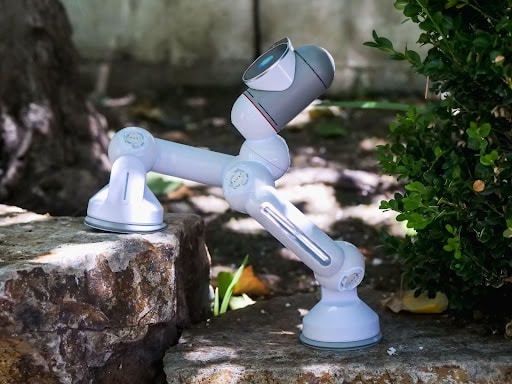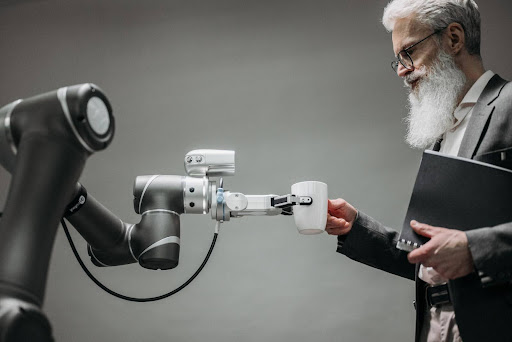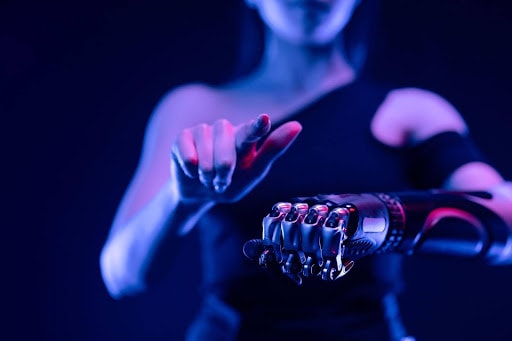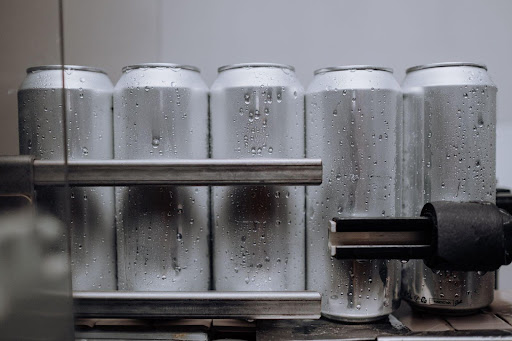The Power of Industrial Automation: Simplifying Work With Technology
Are you a tech enthusiast ready to dive into the fascinating world of industrial automation? Well, then you are in for a treat because we’re about to break down the concept in plain, simple terms. From robots on factory floors to computer-controlled processes, industrial automation is all about making things smarter, faster, and more efficient. Let’s get started!

What is Industrial Automation?
Think of industrial automation as your superhero friend that swoops in to streamline tasks in manufacturing, production, and beyond. It’s like having an extra set of hands (or, in this case, robotic arms) to help with the heavy lifting. Automation makes use of technology to control and execute tasks with minimal human intervention. It’s all about optimizing processes, refining quality, and reducing the scope for errors.
How Does Industrial Automation Work?
Industrial automation relies on an invincible combination of hardware and software. On the hardware side, you’ve got sensors, actuators, controllers, and robots. Sensors collect data from the environment, like temperature or pressure, while actuators perform actions based on that data. Controllers, which can be simple microprocessors or complex computers, process the information and make decisions. And then, there’s the star of the show: robots. These mechanical wonders carry out tasks, from assembling products to packaging them up.

Examples of Industrial Automation
Automotive Marvels
Imagine a car manufacturing plant. In the past, it took weeks to build a single car. But with automation, the process has become lightning-fast. Robots weld parts together with precision, while conveyor belts transport components smoothly. Cameras scan for defects, ensuring each car meets quality standards. It’s a symphony of efficiency!
Take a stroll through the halls of Tesla’s Gigafactory for instance, and you’ll witness the automotive manufacturing revolution in action. With industrial automation at its core, Tesla has significantly slashed the time it takes to produce a car. Robotic arms, precision tools of the trade, expertly weld together intricate components, creating the sleek and energy-efficient electric vehicles we’ve come to admire.
Conveyor systems glide seamlessly, transporting parts with efficiency and precision. Cameras equipped with computer vision technology meticulously scan each car for imperfections, making sure every vehicle rolling off the production line meets the stringent quality standards set by Tesla. The result? A symphony of automation that has propelled Tesla to the forefront of the automotive industry.
E-Commerce Giants and Robotic Wizards
Let’s look at another example – e-commerce giants that ship packages worldwide. Robots zip around massive warehouses, picking items off shelves with pinpoint accuracy. Automated systems sort, pack, and label packages, all the while minimizing human error. This guarantees faster deliveries and happier customers.
Visit an Amazon fulfillment center, and you’ll be stepping into the beating heart of e-commerce automation. Robots, known as Kiva robots, move with remarkable precision across the vast warehouse floors. These robotic marvels navigate through towering shelves, swiftly picking and transporting items to human workers stationed at packing stations.
Once the items are ready for shipping, automated systems take over the meticulous process of sorting, packing, and labeling each package. The result is a ballet of automation that ensures orders are processed at lightning speed with minimal errors. Thanks to this level of industrial automation, Amazon can boast about its ability to fulfill and deliver orders to customers in record time, setting new standards for the e-commerce industry.

Why Tech Heads are Raving About Industrial Automation
First off, it’s all about speed. With the help of automation, tasks can now be completed in a fraction of the time it would take a human. And since for most businesses, time equals money, faster production means more products can hit the market sooner.
Next is consistency. Humans can get tired, distracted, or simply have an off day. But machines? Well, machines are like Energizer Bunnies that can keep going and going, producing consistent results without any complaints.
Quality control also benefits from industrial automation. Smart systems are capable of detecting even the tiniest flaws that human eyes might miss. This means fewer defects and higher-quality products on the market. And who doesn’t want that?
Benefits of Industrial Automation
Here’s a look at some of the benefits offered by industrial automation:
Creative Liberty
Too many dangerous, repetitive, or strenuous tasks to complete? Leave those to the robots. Let human workers focus on more complex, creative, and fulfilling roles.
Cost Crunch
While the initial investment is surely on the hefty side, industrial automation eventually pays for itself. Lower labor costs, reduced errors, and increased output contribute towards serious savings.
Round-the-Clock Productivity
Machines don’t need lunch breaks or sleep. They can operate 24/7, maximizing productivity and output.
Data Acquisition
Automation systems gather loads of data, helping companies analyze trends, identify bottlenecks, and make informed decisions for continuous improvement.

Industrial Automation Trends
Here are some trends that are shaping the future for industrial automation:
Collaborative Robots (Cobots)
These rather-friendly robots work alongside humans, enhancing teamwork and efficiency. They’re designed to be safe, easy to program, and adaptable.
Universal Robots pioneers in collaborative robotics. Their cobots are not just friendly; they’re transforming industries. Universal Robots focuses on making automation accessible to businesses of all sizes. These cobots work side by side with humans, enhancing productivity and safety. As an innovative startup turned industry leader, Universal Robots empowers businesses to automate with ease, adapting to various tasks without the need for advanced programming skills.
Website: Universal Robots
Internet of Things (IoT)
Picture machines, devices, and sensors talking to each other through the internet. This connectivity enables real-time monitoring, predictive maintenance, and faster decision-making. To better understand how the Internet of Things can completely transform automation in the industrial sector, you can read a related blog once you’ve completed this one.
Bosch Connected Industry is a powerhouse in leveraging IoT for industrial automation. Bosch’s IoT solutions connect machines, devices, and sensors, creating an intelligent network. This connectivity enables real-time monitoring and predictive maintenance. By integrating IoT into manufacturing processes, Bosch ensures efficient operations and data-driven decision-making, setting the stage for a smart, connected industrial future.
Website: Bosch Connected Industry
Artificial Intelligence (AI) Integration
AI-powered automation can make decisions based on complex data analysis. From supply chain optimization to demand forecasting, AI is taking automation to a whole new level.
Cogniac Corporation is pushing the boundaries of AI-powered automation. Cogniac’s platform utilizes AI to analyze visual data, making complex decisions in real-time. From quality control in manufacturing to optimizing logistics, Cogniac’s AI integration enhances efficiency and accuracy. As a forward-thinking organization, Cogniac is at the forefront of transforming industries through intelligent automation.
Website: Cogniac Corporation
Green Automation
With environmental concerns on the rise, automation is also focusing on energy efficiency. Smart systems can help optimize energy usage, reducing waste and carbon footprint.
For example, let’s take a quick look at CarbonCure Technologies. As sustainability takes center stage, CarbonCure focuses on reducing the carbon footprint in the concrete industry. Their smart technology injects recycled carbon dioxide into concrete, not only enhancing its strength but also contributing to a greener environment. By embracing green automation, CarbonCure is leading the charge towards a more sustainable and environmentally conscious industrial landscape.
Website: CarbonCure Technologies

There you go, folks! Industrial automation is essentially your trusty sidekick that can take care of repetitive, mundane tasks while you focus on being the main character and driving the plot as you deem fit. From expediting production to ensuring top-notch quality, automation is transforming industries across the board. It’s not just about machines – it’s about unleashing the true potential of technology to revolutionize the way we work and live. So, here’s to a future where robots and humans team up to create something extraordinary!


